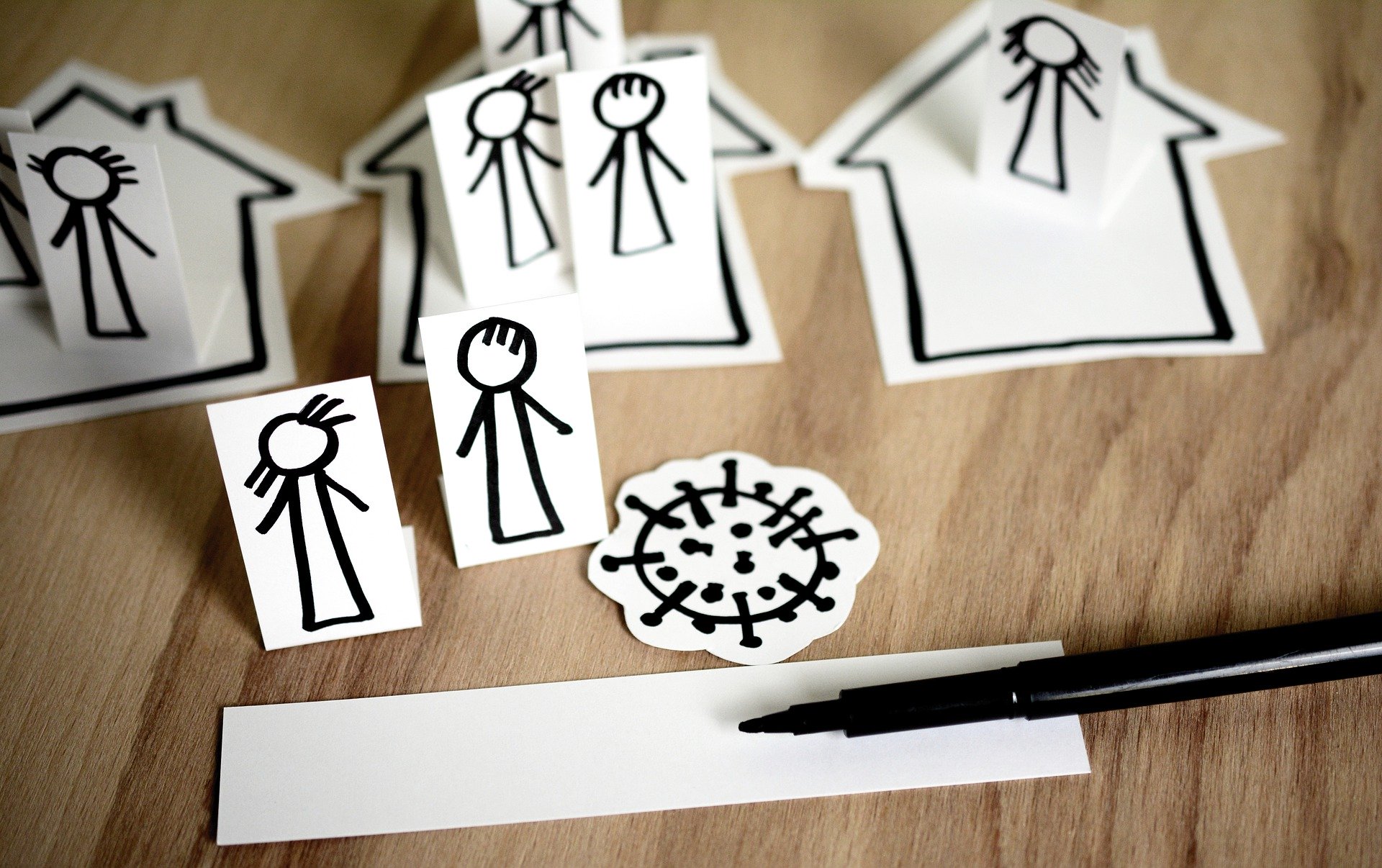This post opens a series “Politics & Pandemics” – weekly updates on the coronavirus outbreak and its effects on politics, media, and activism. We will publish blog entries written by us and invited experts, where we will try to look at the current events through the prism of political and social sciences. The first entry is written by Doctoral student Elena Gorbacheva.

Reading time: 5 minutes
The COVID-19 pandemic has changed everything and we are stepping into uncharted territory now. In post-Soviet Russia, the state of emergency has never been declared on the federal level, but it will probably be declared one of these days. The usual course of life has been affected by quarantines and physical distancing in dozens of countries. Everyone had to change their routines, and of course, protests have been also affected. By definition, social movements require a plurality of actors engaged in a network of relations (Diani 1992). Successful political protest needs coordination, which is usually costly and requires intense social interactions. Protesting under autocracy is twice as costly as it may result in violence and repression becomes even more challenging and costly under both democracies and autocracies in times of social distancing. However, the measures implemented all over the world during the time of the coronavirus pandemic aim at restricting physical interactions to flatten the curve and to slow down the spread of infection. How do protesters and social activists manage their activities during the coronavirus outbreak? How does social distancing and quarantine affect opposition movements in the east neighbor Russia?
To start with, repertoires of social movement vary significantly: from street activism that first comes to mind like rallies, demonstrations, blockades, picketing, public meetings to actions such as petition signing, letter-writing, statements in media, etc. (Tilly 2006). Additionally, we observe a more active use of online tools for protest campaigns: for instance, during 2011-2012 “For Fair Elections” movement, the Internet was one of the driving forces of the protest (Oates 2013) – information on the electoral fraud was widely spread through online platforms, and protest activities were in general coordinated through social media. So, as we can see, some of the forms of the protest do not require going to the streets, while for others physical interaction is essential.
Moscow authorities started to introduce movement and mass gathering restrictions in the middle of March. Due to their own wish to prevent the spread of the infection, the organising committee of the campaign “Net!” decided to postpone the demonstration against the amendments on the 22nd of March in Moscow. The demonstrations, however, were in more than 10 cities across the whole country, where it was still allowed. It is easier for authorities now to prevent protests – from the last days of March, in most of the regions, mass gatherings are prohibited due to the “self-isolation regime”.
Some activists tried to organise single pickets in the second half of March. Even before the lockdown, several participants of single pickets against the amendments or in support of political prisoner Azat Miftakhov were detained by police, who said that they violated the restrictions of mass gatherings – which single picket is not. Nevertheless, some of the picketing campaigns have been also moving online. Activists from Nizhny Novgorod launched a campaign “Remote picketing”, where they encourage everyone who is against the new constitutional amendments to make a sign, take a picture with it and publish it on the internet instead of going to conventional street picketing. The regular “metropicketing” (Метропикет) – single pickets next to Moscow metro stations in support of political prisoners – are now also happening on social media.
Regular protest camps and assemblies are also trying to adapt to the new restrictions. For the first time in 5 years, the volunteers had to suspend their vigil “Nemtsov bridge” on Bolshoy Moskvoretsky Bridge, where Russian opposition politician was killed in 2015. The camp at Shies continues to operate at this moment but has introduced safety measures including prohibiting arriving at the camp for people outside Arkhangelsk Region and the Komi Republic. Termless protests (bessrochkas) that are held now in around 30 cities across Russia, also change their work. Some bessrochkas have temporarily stopped their activities. Arkhangelsk bessrochka, the first one to be created almost a year ago, continues to work with some changes: they stopped, for instance, giving out leaflets and minimised social contacts, but the activists still come to Lenin’s square every day, just keeping the safety distance between each other now.
On 31st of March, Russian State Duma passed a bill on amendments to the Code of the Russian Federation on Administrative Offences. According to the new amendments, new rather large penalties for breaching the quarantine, violating the regulations aimed at curbing an epidemic, and spreading fake information about the coronavirus were introduced. The penalties are a real threat to the activists, who despite new restrictions still engage in some forms of street activism. Some of the activists do not recognise the authority of the “self-isolation” decrees, saying that the heads of regions do not have the powers to issue them. Thus, in several regions (for example, Moscow, Komi Republic) lawyers and activists are suing regional heads for introducing regimes of “self-isolation” before even the state of emergency has been announced on the federal level.
Nevertheless, on 1st of April evening, President Putin has signed the bill amending the law on emergency situations in Russia, according to which the Russian government will have the powers to declare the state of emergency on the federal level (until now, only the president and the state commission on the emergency situations had the right to do so, but has not exercised it). So it can be expected that the state of emergency will be announced soon.
Thus, most of the social activism will be happening online in the near future. It offers some challenges too. Despite being deliberating, the Internet is affected by the social and digital divide in Russia, which complicates bringing people together online. Also, after the events of 2011-2012 freedom of the Internet was significantly restricted (Denisova 2017).
For example, the aforementioned campaign “Net!” and its volunteers said that they will continue to spread the information online about the amendments to the Constitution and why the citizens should oppose them. They will also continue to share videos of famous activists explaining why they will vote against the amendments. They do it through social media groups mostly, as the access to the website of the campaign has been restricted by Roskomnadzor, the Federal Service for Supervision of Communications, Information Technology and Mass Media.
Despite this all, the activists try to see the opportunities that the emergency opens – street demonstrations are important, but they are rarely achieving results. Now the activists can spend more time creating horizontal networks and engaging in deep conversations with other people online to build more social capital. They can think through their strategies, try to engage more people in campaigns, rest a bit after spending days outside at termless protests and pickets. The physical space of social movements is under lockdown, but they continue to live online.
